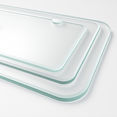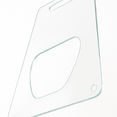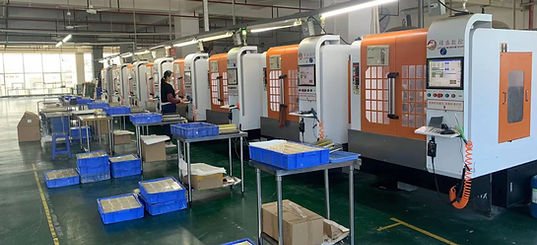Glass Drilling
Glass drilling is a critical precision process used to create clean, accurate holes in glass substrates for integrating components such as buttons, camera lenses, proximity sensors, microphones, and connectors. This step is essential in the production of custom cover glass panels for electronic devices, industrial interfaces, and smart systems.
Using CNC-controlled diamond drilling tools, ultrasonic machining, or CO₂ laser drilling, we deliver tight-tolerance hole placement with minimal chipping, no surface cracking, and excellent edge quality—even on thin or chemically strengthened glass.
Key Features:
-
Hole Sizes: From micro-apertures (<0.5mm) to large cutouts
-
Position Tolerances: Up to ±0.05 mm for precision alignment
-
Edge Quality: Smooth, chip-free finishes for clean integration
-
Glass Types Supported: Soda-lime, aluminosilicate, borosilicate, chemically strengthened glass
Applications:
-
Mobile device glass: speaker holes, camera windows, fingerprint sensor cutouts
-
Industrial panels: control buttons, LED indicators, ports
-
Medical & optical devices: probe entries, lens holes, alignment markers
Our advanced drilling capabilities ensure that your glass panel maintains structural integrity, aesthetic consistency, and precise functionality—even under high-volume production conditions.



1.CNC Glass Drilling – Precision Hole Making with Diamond Tooling
CNC glass drilling utilizes advanced computer-controlled machinery equipped with diamond-tipped drill bits to perform high-precision hole drilling in glass substrates. This mechanical method is ideal for creating a wide variety of functional holes in cover glass panels, including through holes, blind holes, and countersunk holes, with exceptional accuracy and repeatability.
Key Characteristics:
-
Suitable for larger hole diameters, typically from a few millimeters up to several centimeters
-
Supports multiple hole types: through holes, blind holes, countersinks
-
Compatible with glass thicknesses from 0.5 mm to 5 mm or more
-
Requires post-drilling edge polishing to remove micro-cracks and enhance durability
Advantages:
-
High dimensional precision (tolerance up to ±0.05 mm) for tight-fitting components
-
Cost-effective for batch processing and medium-to-high volume production
-
Suitable for flat glass, chemical-strengthened glass, and optical-grade materials
CNC glass drilling is the go-to solution for manufacturers requiring clean, repeatable, and scalable hole creation in displays, sensor modules, device enclosures, and industrial control panels.

2.Laser Glass Drilling – Ultra-Precise, Non-Contact Micro Hole Processing
Laser glass drilling uses a focused high-energy laser beam to remove material from the glass surface through thermal ablation or photochemical interaction, enabling the creation of micro-sized holes with extreme precision. As a non-contact process, it minimizes mechanical stress and damage, making it ideal for thin and sensitive glass types, including chemically strengthened glass.
Key Characteristics:
-
Designed for micro-hole drilling, typically ranging from tens to hundreds of microns
-
Contact-free process eliminates stress cracks and surface chipping
-
Produces cleaner edge quality, often with minimal or no post-processing
-
Compatible with thin glass substrates and optical components
Advantages:
-
Exceptional accuracy, suitable for fine-featured sensor openings, microfluidic channels, and precision optics
-
Performs well on chemically strengthened, ultra-thin, or coated glass
-
Enables complex pattern creation and tight hole spacing
Laser drilling is widely used in advanced electronics, medical devices, displays, and optical systems where precision, clarity, and minimal thermal distortion are essential.

3.Ultrasonic Glass Drilling – Vibration-Assisted Precision Hole Machining
Ultrasonic glass drilling utilizes high-frequency mechanical vibrations combined with abrasive slurry to gently and precisely remove material from the glass surface. This method is particularly effective for drilling high-aspect-ratio holes and complex geometries in brittle or hard-to-machine glass types, without generating significant heat or mechanical stress.
Key Characteristics:
-
Suitable for small to medium-sized holes (typically 0.3 mm to several mm)
-
Produces smooth, chip-free edges with excellent hole circularity
-
Low thermal input prevents micro-cracking or deformation
-
Can be applied to flat, curved, or chemically strengthened glass
Advantages:
-
Ideal for specialty glasses, including borosilicate, aluminosilicate, and quartz glass
-
Precision drilling of blind holes, deep holes, and non-standard shapes
-
Excellent for applications requiring clean finishes and material integrity
-
Compatible with delicate substrates that may be unsuitable for conventional mechanical or laser drilling
Ultrasonic drilling is widely used in optical devices, medical diagnostics, advanced sensors, and micro-structured glass components, where dimensional accuracy and low damage are critical.








